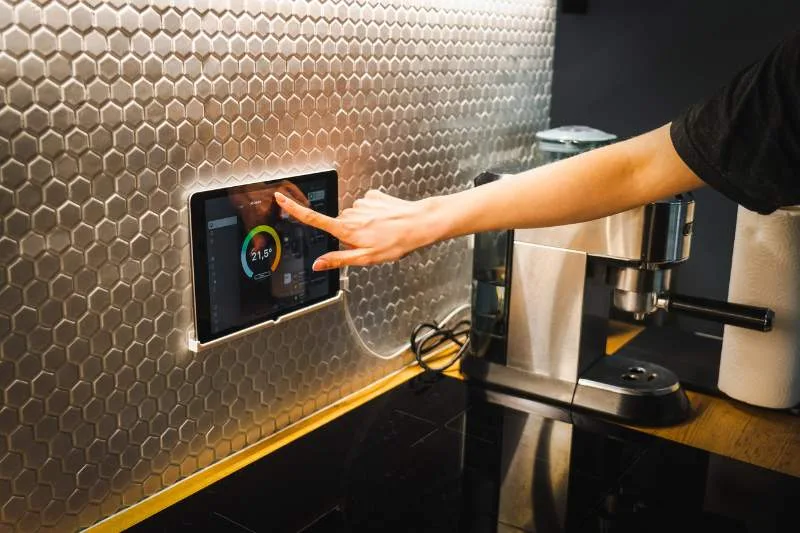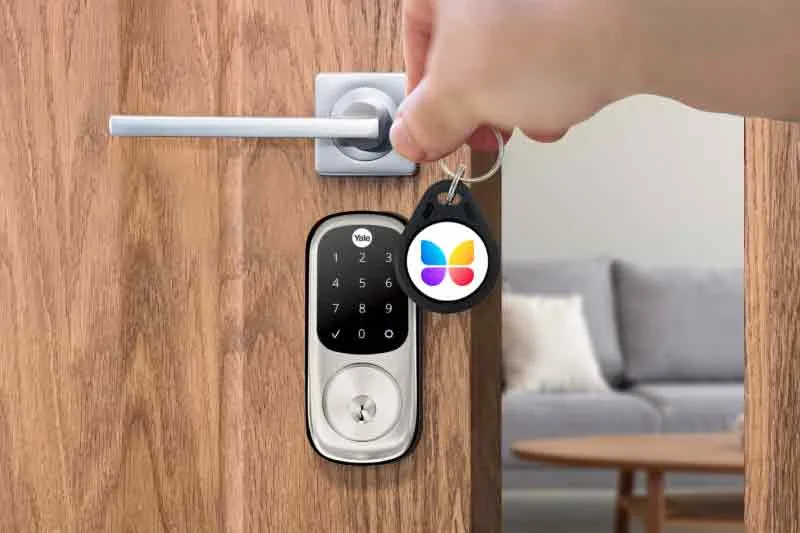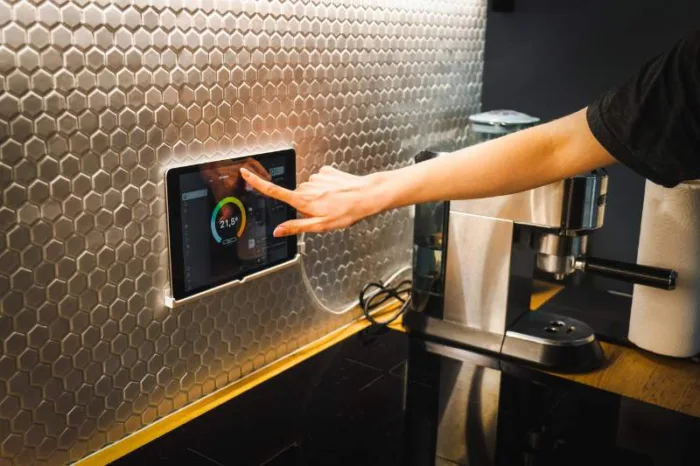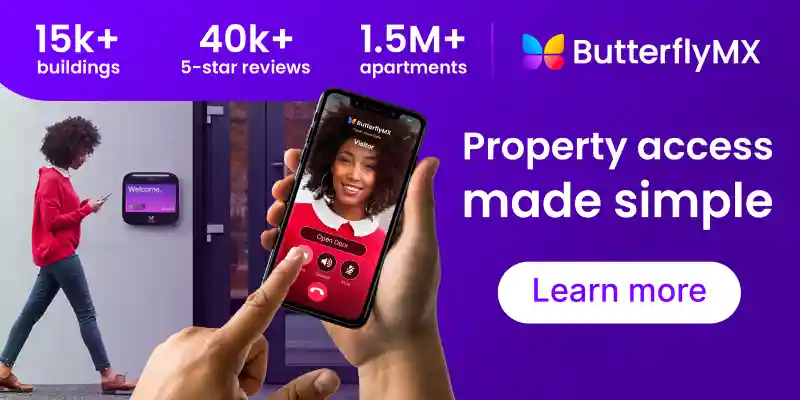Key takeaways
- Smart home integrations for apartment communities connect devices like locks, lights, and thermostats into one system to simplify apartment living.
- These technologies help property managers reduce manual tasks and improve building operations.
- Residents benefit from greater control, security, and comfort through mobile apps and voice assistants.
- Choosing the right provider involves evaluating integration compatibility, scalability, and the availability of ongoing support.
- Upfront costs, staff training, and resident adoption are important factors to consider before implementation.

Smart home technology is becoming increasingly common in apartment communities as renters seek convenience, safety, and control in their living spaces. From keyless entry to energy-efficient thermostats, residents expect modern features that simplify everyday tasks.
To meet this demand, more property owners and managers are turning to smart apartment integrations. These systems integrate multiple technologies into a single, connected experience, streamlining operations and enhancing the resident experience.
In this post, we’ll explain what smart home integrations are, explore their key benefits and use cases, and offer guidance on how to choose the right setup for your property.
This post covers:
- What is smart home integration in apartment communities?
- Benefits of smart home technology for apartment communities
- 5 smart home integrations for apartments
- Considerations before implementing smart apartment tech
- How to choose the right smart home technology provider
- Smart apartment integrations FAQs
What is smart home integration in apartment communities?
Smart home integration refers to the connection of various technologies within an apartment community into a single, coordinated system. This includes devices such as smart locks, thermostats, lighting, sensors, and intercoms that can be managed through one platform.
When properly integrated, these technologies work together to enhance building operations and provide residents with increased control over their living environment.
How do smart apartments work?
Smart apartments utilize connected devices that enable residents and property staff to monitor and control specific features remotely. Residents can unlock doors, adjust thermostats, or receive alerts through a mobile app or voice assistant.
Property managers can automate tasks like unit access for maintenance or energy settings between leases. These systems rely on integrations between hardware, software, and network infrastructure to create a more efficient and responsive living experience.
Benefits of smart home technology for apartment communities
- Smart home devices can help property managers reduce manual tasks by automating functions like lighting schedules, thermostat adjustments, and unit access for maintenance staff.
- Residents gain more control over their living space with features that allow them to manage access, temperature, and lighting through mobile apps or voice commands.
- Integrated smart systems make it easier for property teams to monitor building operations and respond quickly to maintenance issues or system alerts.
- Communities that adopt smart apartment technology often appeal to residents who value convenience, digital tools, and energy efficiency in their daily routines.
- Smart devices can support long-term cost management by improving energy use and reducing the need for on-site staff to handle routine tasks.
5 smart home integrations for apartments
Smart home integrations combine multiple technologies into a unified system that benefits both residents and property managers. Instead of relying on separate apps or tools for each feature, an integrated setup allows devices to communicate with one another.
Here are five apartment integrations to consider:
- Smart locks and access control
- Smart thermostats
- Smart lighting
- Leak detectors and smart sensors
- Voice assistants and mobile app integrations
1. Smart locks and access control
Smart locks offer residents the ability to unlock their doors with a phone, key fob, or PIN code, eliminating the need for physical keys. This flexibility also applies to guests and service providers, who can be granted temporary or time-limited access.
When paired with entry systems like video intercoms or keypads at building entrances, smart locks help create a secure access system throughout the property. Property managers can monitor entry events and control access remotely, which simplifies operations and enhances security.

2. Smart thermostats
Smart thermostats allow residents to adjust their home’s temperature remotely, create schedules, or use preset modes to improve comfort and reduce utility costs. These devices adapt to resident preferences and can provide real-time insights into energy use.
For property managers, smart thermostats offer operational advantages, especially in vacant units. By integrating with maintenance systems, thermostats can automatically adjust settings between leases, making the system more energy efficient while reducing waste and helping prepare units for new residents.
3. Smart lighting
Smart lighting systems give residents the ability to control lights through their smartphones or set automatic timers based on daily routines. This not only adds convenience but also supports better energy management.
For apartment communities, smart lighting in common areas or hallways can improve safety and lower electricity bills. It’s also a feature that appeals to residents who prioritize sustainability and want to reduce their environmental impact.
4. Leak detectors and smart sensors
Smart leak detectors and environmental sensors provide real-time alerts for issues like water leaks, humidity changes, or unusual temperature fluctuations. These small devices can be placed in kitchens, bathrooms, or laundry rooms to detect problems early.
When connected to a central property management system, these sensors help teams respond quickly to maintenance needs. This minimizes the risk of damage and reduces repair costs while giving residents peace of mind.
5. Voice assistants and mobile app integrations
Voice-enabled devices allow residents to control apartment features through simple commands. Whether adjusting the thermostat, turning off lights, or checking if the front door is locked, these tools add a layer of hands-free convenience.
When combined with mobile apps, voice assistants become part of a larger ecosystem that supports daily living. Residents can manage everything from entry access to climate settings in one place, and property managers can ensure a more consistent and user-friendly experience across all units.
Discover these 5 trending apartment technologies:
Considerations before implementing smart apartment tech
Before adding smart technology to your apartment community, it’s important to think through a few key factors. From cost and system compatibility to resident adoption, these considerations will help ensure a smooth rollout and long-term success:
- Cost. Upfront installation costs can be significant, especially when retrofitting older buildings that may require infrastructure upgrades or added connectivity.
- System compatibility. New devices must integrate seamlessly with your existing property management systems and building infrastructure, which may require coordination with multiple vendors.
- Training. Property staff will need training to use and support the technology, which adds time and resource planning to the implementation process.
- Privacy. Any smart system that collects data must comply with privacy regulations and protect resident information, which means carefully evaluating vendor policies.
- Resident adoption. Not all residents are familiar with smart devices, so offering clear onboarding instructions and ongoing support can help increase adoption and satisfaction.
How to choose the right smart home technology provider
Choosing the right provider is an important step in setting up smart technology that meets the needs of both residents and property staff.
Here are a few factors to consider when evaluating your options:
- Integration capabilities. Ensure the provider’s devices and platforms can integrate with your existing property management software, access control systems, and other building technologies.
- Scalability. Select a solution that can be deployed across multiple properties or expanded over time as your portfolio grows.
- Installer network. Look for a provider that offers access to a certified installer network or has strong relationships with local low-voltage professionals to ensure a smooth and compliant installation.
- Support and reliability. Look for providers with a proven track record of dependable performance and responsive customer service to support your team throughout the installation process and beyond.
Smart apartment integrations FAQs
- What is a smart home integration?
- How do you make your apartment a smart home?
- What does smart home mean for apartments?
- How do smart homes enhance convenience for residents?
What is a smart home integration?
Smart home integration is the process of connecting different smart devices and systems, such as locks, lights, thermostats, and sensors, so they work together through a centralized platform. This allows for remote access, automation, and simplified control from a single app or interface.
How do you make your apartment a smart home?
To make your apartment a smart home, start by selecting compatible devices like smart locks, thermostats, lights, and plugs. Then, connect them using a hub or mobile app that supports integration with your building’s infrastructure and any existing property systems.
What does smart home mean for apartments?
In an apartment setting, a smart home refers to a unit or community that uses connected technology to enhance daily living. This includes features that offer more control, enhanced security, and improved energy efficiency, all tailored to rental environments.
How do smart homes enhance convenience for residents?
Smart homes provide residents with more control over their space through mobile apps or voice assistants. They can unlock doors, adjust temperatures, or turn off lights from anywhere, making everyday tasks quicker and more efficient.

Get your free quote!
Fill in the form below, and we'll email you right back.
Want a free quote?
Fill in the form below, and we'll email you right back.
You’ll be redirected shortly...






